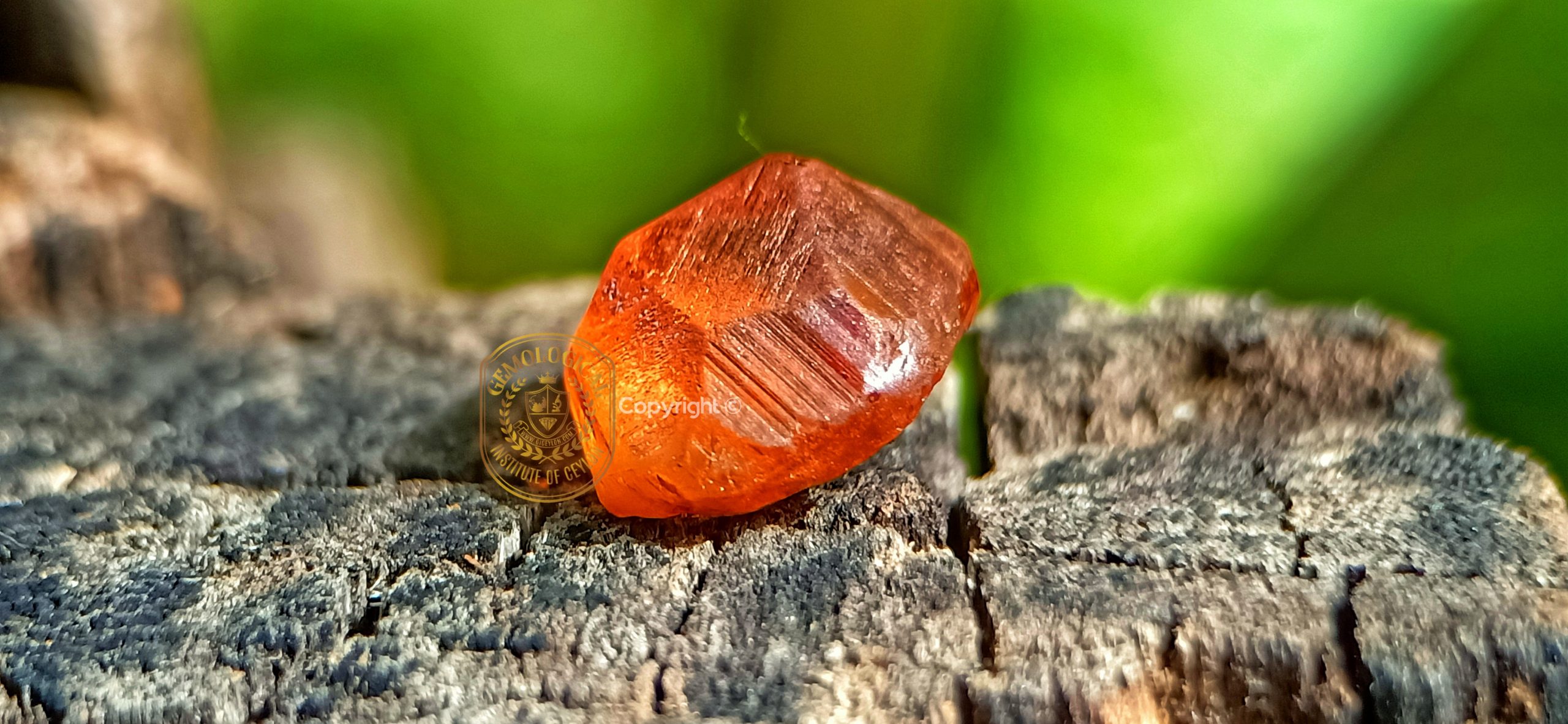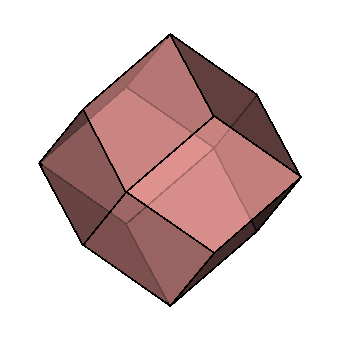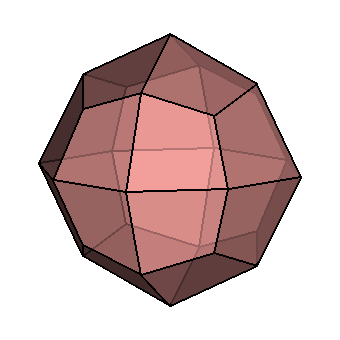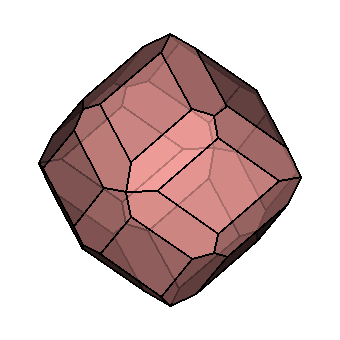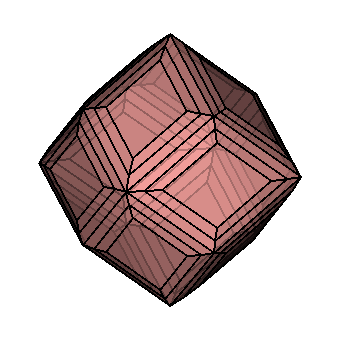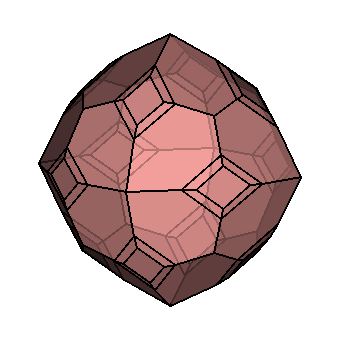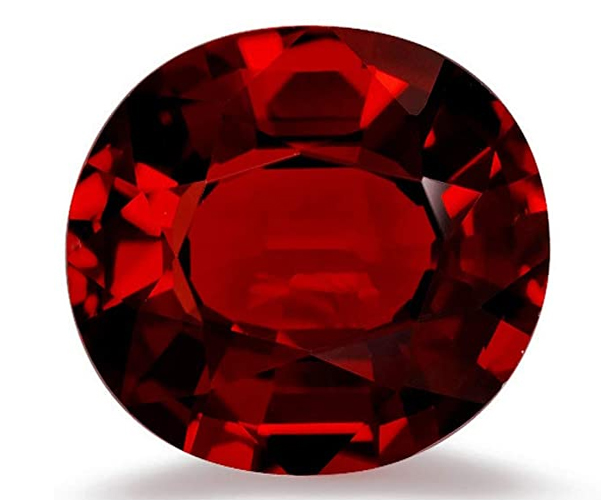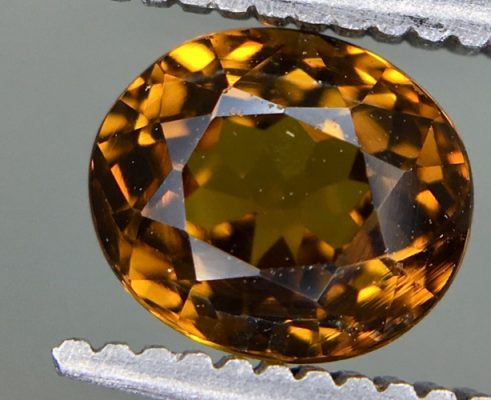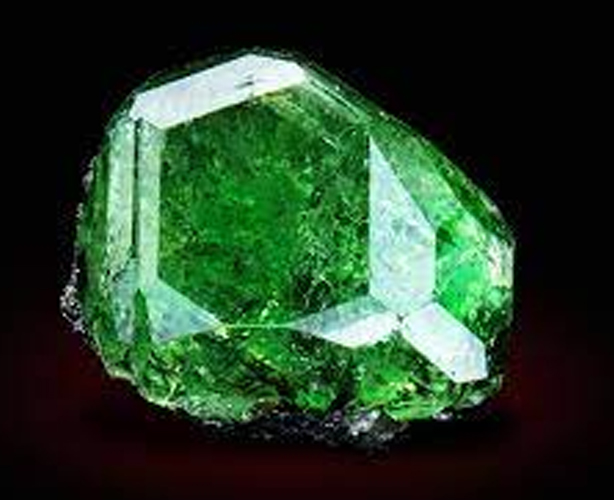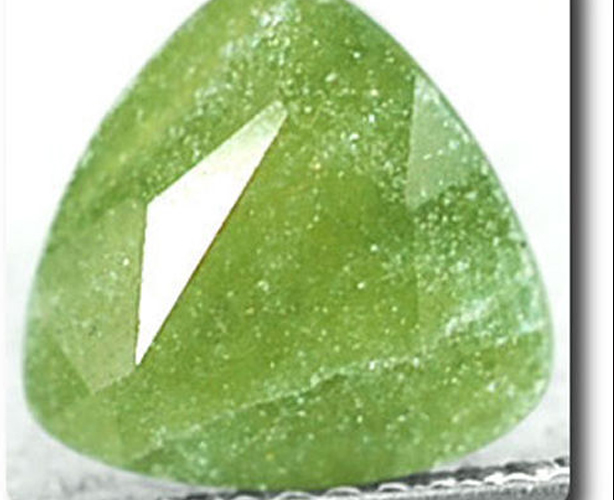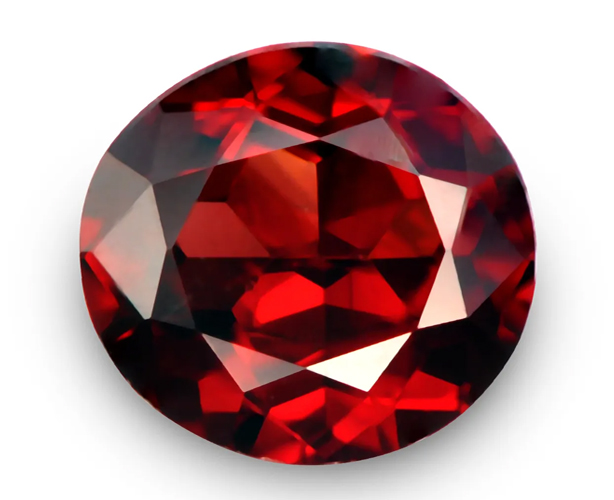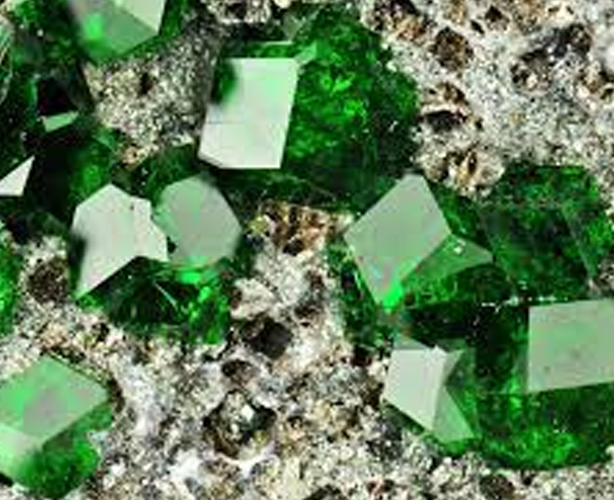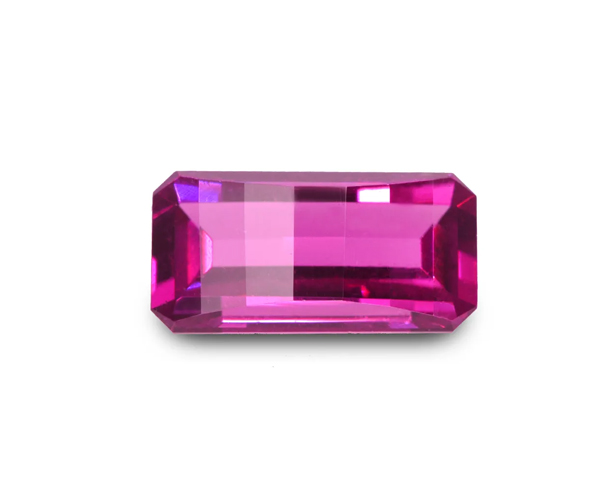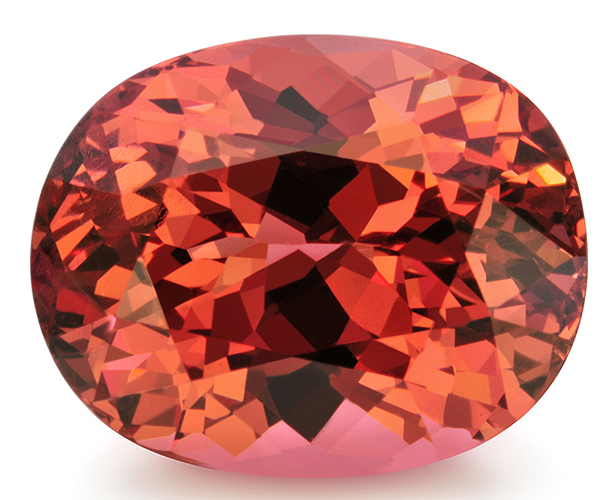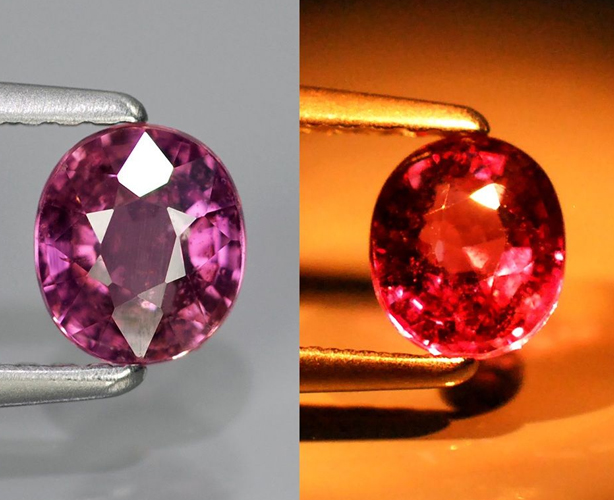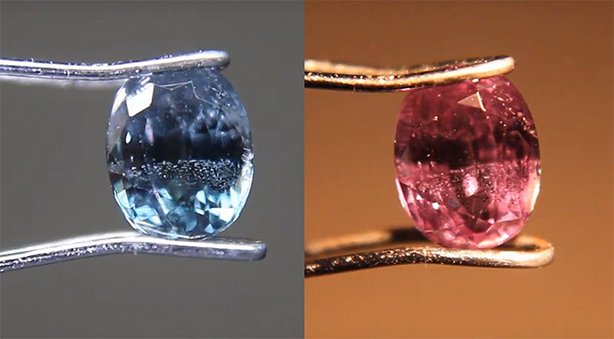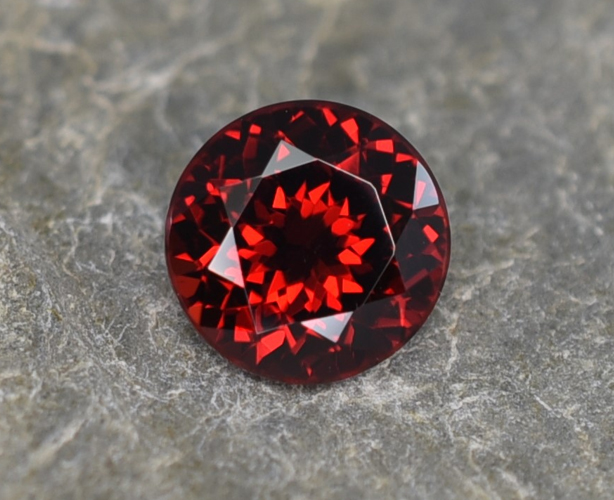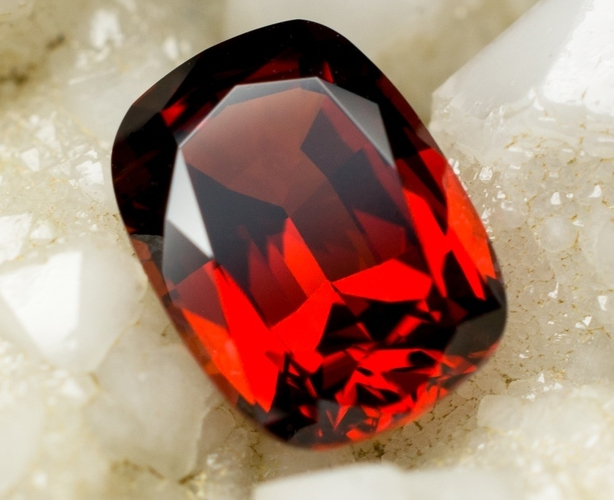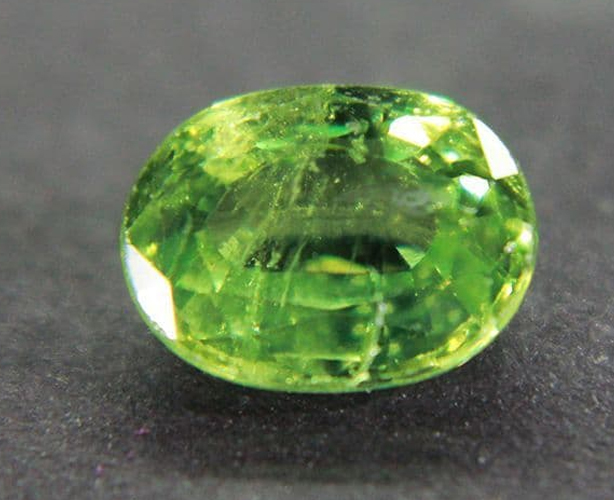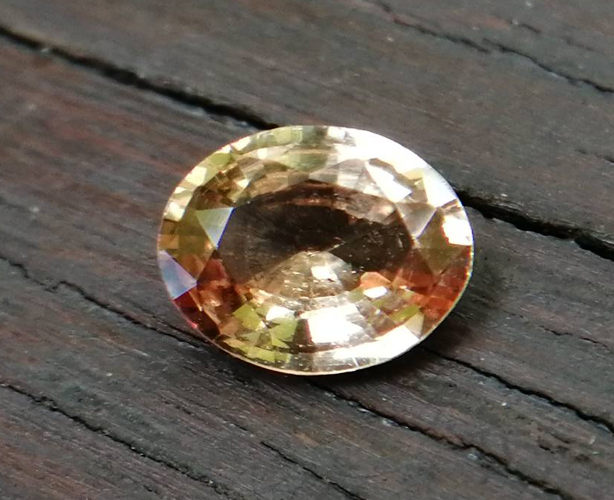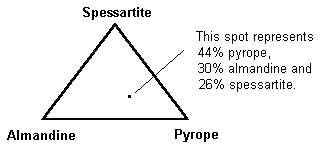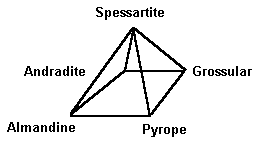Zircon
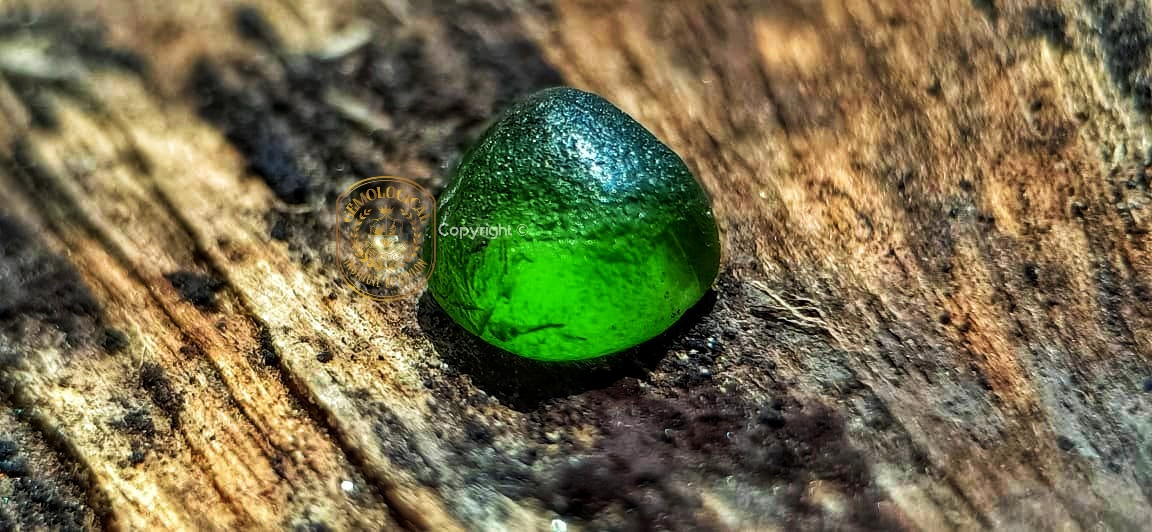
| Name | Zircon |
| Varieties | Hyacinth, Starlite ,Etc.. |
| Crystallography | Tetragonal. Crystals prismatic, pyramidal; often twinned; rounded pebbles. |
| Crystallographic Forms |
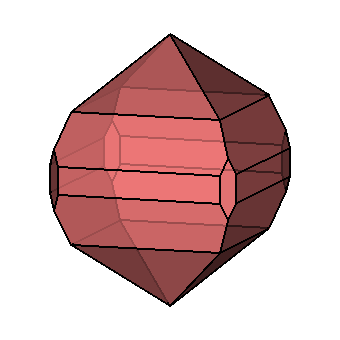 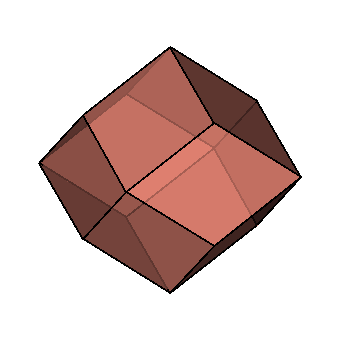 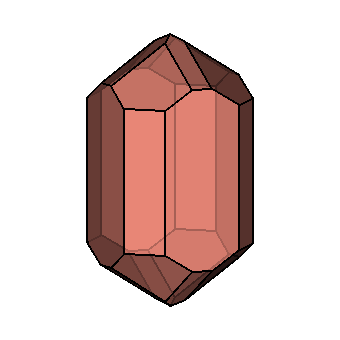 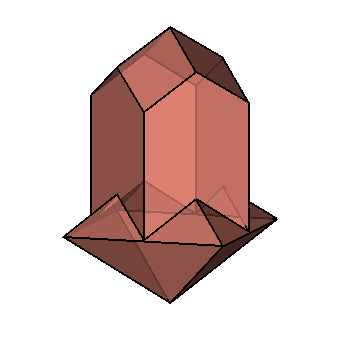 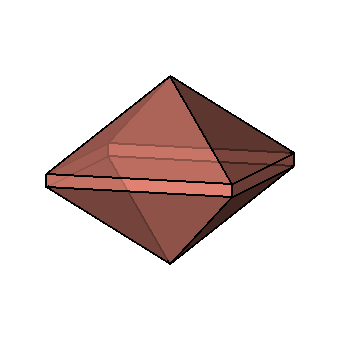 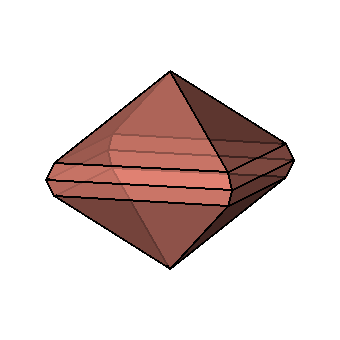 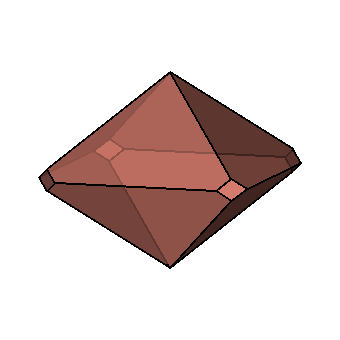 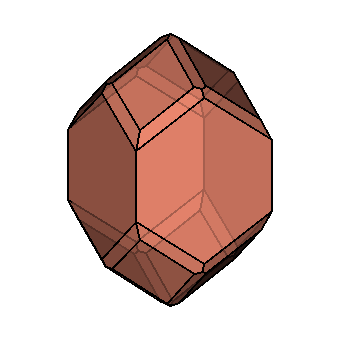 |
| Refractive Index | Varies by the amount of radioactive damage to its crystal structure. Low (most damaged): 1.78 – 1.85; Intermediate: 1.85 – 1.93; High (least damaged): 1.92 – 2.01. See “Varieties” for more information. |
| Colors | Reddish-brown, yellow, gray, green, red; various other colors induced by heating. |
| Luster | Vitreous to adamantine; sometimes greasy. |
| Polish Luster | Vitreous to adamantine |
| Fracture Luster | Vitreous to subadamantine |
| Hardness | 6 (Low), 7.5 (High) |
| Fracture | Conchoidal |
| Specific Gravity | Low 3.95-4.20, Intermediate 4.08-4.60, High 4.60-4.80 |
| Birefringence | Varies by the amount of radioactive damage. 0 (isotropic)-0.059. See “Varieties” for more information. |
| Cleavage | Imperfect |
| Dispersion | 0.039 for all zircon types. |
| Heat Sensitivity | None |
| Luminescence | See “Identifying Characteristics.” |
| Luminescence Present | Yes |
| Luminescence Type | Fluorescent, Phosphorescent, UV-Long, UV-Short, X-ray Colors |
| Enhancements | Virtually all blue zircon is heat treated. |
| Typical Treatments | Heat Treatment |
| Special Care Instructions | Facet edges wear off. Use protective settings for ring use. |
| Transparency | Transparent to opaque. |
| Absorption Spectrum | See “Identifying Characteristics.” |
| Phenomena | Chatoyancy, rare |
| Birthstone | December |
| Formula | ZrSiO4 + Fe, U, Th ( Zirconium Silicate ) |
| Pleochroism | Distinct in blue stones: deep sky blue/colorless to yellowish gray. Red: red/clove brown. Brown: reddish-brown/yellowish-brown. |
| Optics | Uniaxial (+). |
| Optic Sign | Uniaxial + |
| Etymology | From the Arabic zargun, from the Persian zar for “gold” plus gun for “color.” The name is ancient. |
| Occurrence | In igneous rocks worldwide, especially granites. Also found as alluvial material. |
| Inclusions | Angular zoning and streaks are sometimes seen in the low type. Some silk is seen occasionally, as well as tension cracks and epigenetic cracks stained with iron oxides. Metamict pieces may have bright fissures known as angles. |
Varieties
It’s true that zircons aren’t just fake diamonds. They’re also more than just that. They’re beautiful stones in their own right, and they come in a wide range of colors that are found in nature. Heat treatments also make a lot of new colors.
The names for Zircons
*Hyacinth or jacinth is a type of transparent reddish-brown zircon. This name was also used for hessonite, which is a reddish-orange variety of garnet.
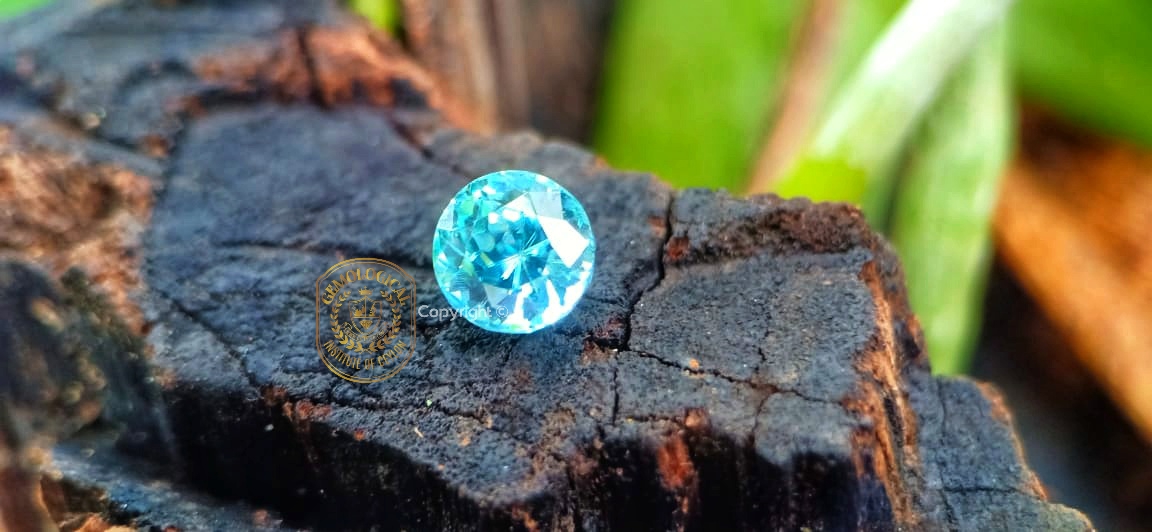
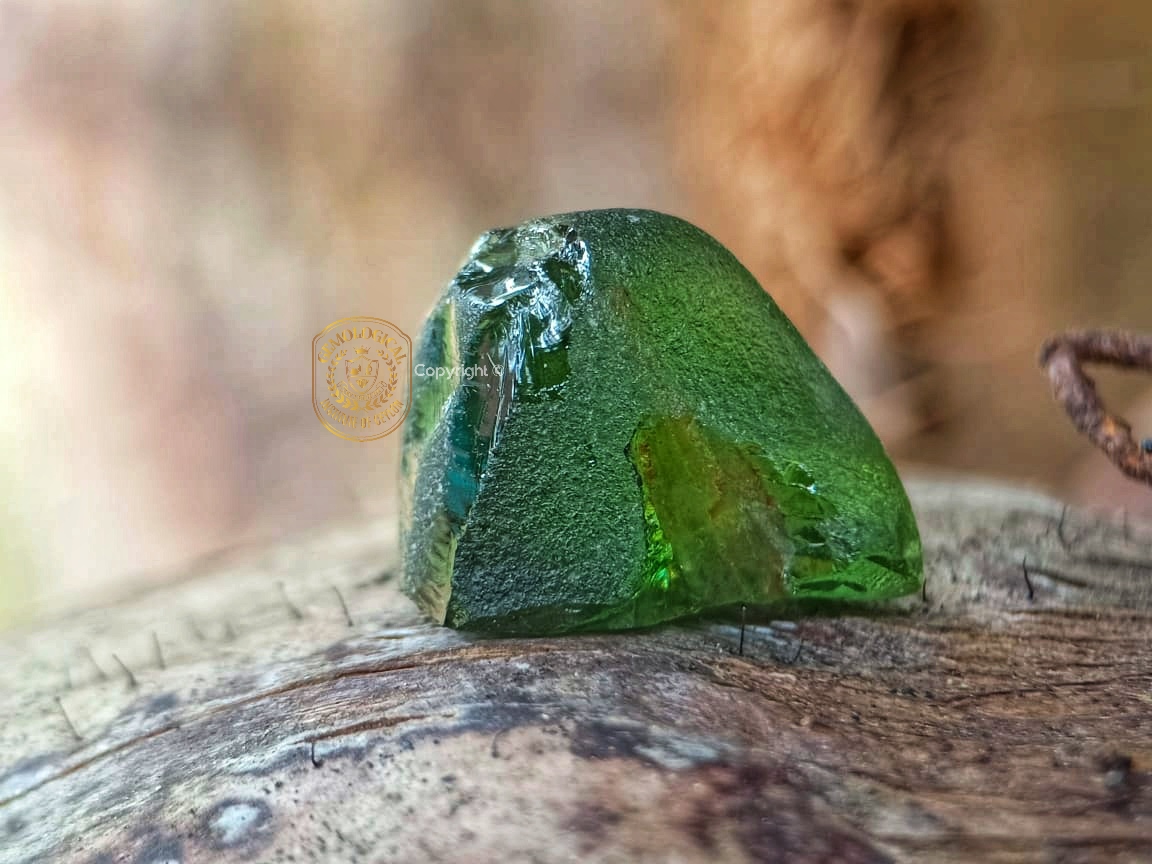
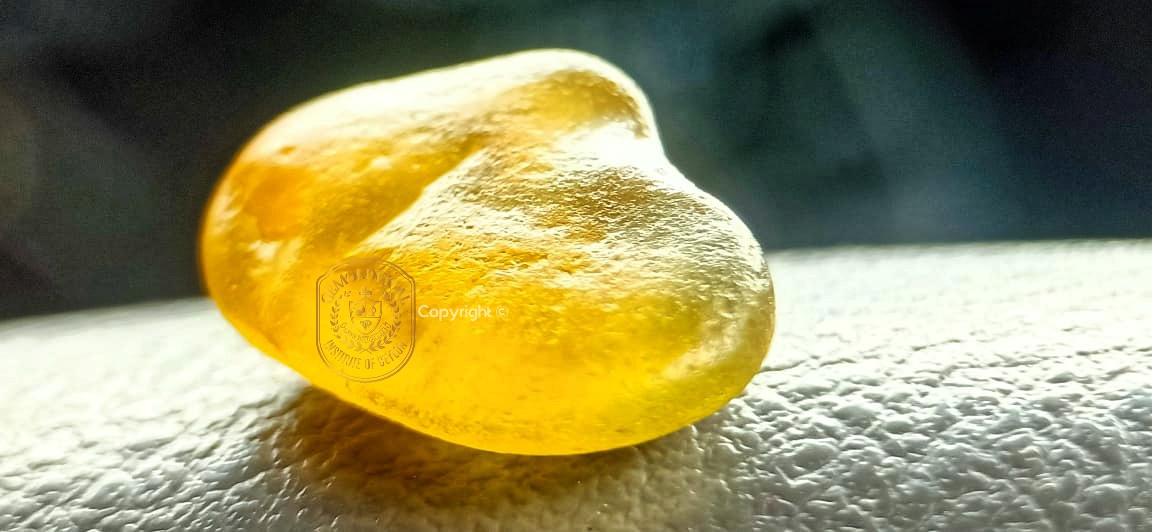
Misleading Names
Zircons that don’t have any color have been sold as “Matara” or “Matura diamonds” and “Ceylon diamonds.” Zircons can be used to make diamonds look like diamonds, but selling them as real diamonds is unethical. Blue zircons have been sold as “Siam aquamarines,” but they aren’t. Zircons are rarer than both diamonds and aquamarines, but these gems are more popular than zircons, even though they are rarer. Thus, some dishonest people will use these names to sell zircons more quickly. You can see a list of gemstone names that aren’t true or that aren’t very clear.Radiation and the Properties of Zircon They get a little bit of radioactive uranium and thorium as they grow. This radiation can’t be seen or heard. In time, the crystal structure is broken down by a lot of radiation, but not all at once. These stones, which are usually green, change color. Those are materials that no longer have crystals in them because radiation has made them more amorphous than they used to be. They have a lower RI and more sparkle than crystallized zircons.
People put Zircon into one of three groups based on how bad it is going to get. High, immediate, medium, or low. These are also called alpha, beta, and gamma, but they aren’t the only types of brain cells. The classes are easy to tell apart because the properties change in an even way. All of the zircon in high zircon is crystal clear and has the best properties. Intermediate zircon is a material that has been slightly damaged by radiation. A lot of zircon is metamict. ( A mineral whose crystal structure has been disrupted by radiation from contained radioactive particles ) It’s interesting that dispersion is the same for both high and low types, but other optical properties are different. The texture of low zircon is often cloudy.Identifying Characteristics
The most obvious way to tell a zircon diamond from a real diamond is by the former’s birefringence.
All types of faceted zircon can be identified by having worn or abrased facet edges.Luminescence
The fluorescence of zircon can be different. Some things aren’t useful. Other crystals light up very brightly. Mustard yellow and yellow-orange are two of the most common colors that glow under shortwave ultraviolet (UV) light. There are some zircons that glow dull yellow in longwave (LW) UV light. They may also phosphoresce, which makes them look like fireworks. When zircon is looked at with X-rays, it can be white, yellow, green, or violet-blue.
- Red to orange-red: inert to strong, yellow to orange (SW).
- Yellow to orangish-yellow: inert to moderate yellow to orange (LW and SW).
- Green: usually inert.
- Blue: inert to moderate, light blue (LW).
- Brown: inert to very weak red (SW).
Synthetics
A method called flux has been used by scientists to make crystalline zircons for research, so they can learn more about them. However, there is no known use for this lab-made material in jewelry. However, you may be able to buy “synthetic zircons” online. It’s not clear if this material is made in a lab or if it’s cubic zirconia, which is more common and well-known (CZ). Zircons and cubic zirconia have both been used to look like diamonds, but they’re two different types of gems. While the CZ used in jewelry is made in a lab, it’s not synthetic zircon.
Enhancements
Zircons that don’t have any color or blue have almost always been heated. This procedure is not going to be found. Heating is the most common way to make blue, colorless, and golden-yellow shades. The stones that make these beautiful colors are usually reddish-brown in color. People don’t usually heat treat zircons that aren’t the same color. Green and yellow colors made by heating are usually more stable over time and less likely to fade from sunlight and UV light than blues made by heating.
Heating helps to crystallize zircons that aren’t completely clear. This increases the specific gravity and makes the absorption spectrum more focused. People who heat green Sri Lankan zircon make it look a little less green in color. Sri Lankan material that is reddish-brown turns colorless, sometimes reddish violet. A lot of people like to heat red-brown Thai and Cambodian stones so that they become colorless, blue, or golden. Often, brownstones are heated with or without oxygen in them to make them look blue and yellow. Brown zircons with a lot of uranium may turn green when they are heated.Sources
Zircon can be found all over the world, but crystals that are good enough to be used as gems are rare. Sri Lanka and Southeast Asia are the main sources of zircons that are good enough for jewelry. Sri Lanka makes gravel in all kinds of colors, including rare cat’s eyes. Cambodia is the chief source of material that heat treats to colorless and blue. Myanmar produces yellowish and greenish stones in gem gravels with ruby. These stones have complex absorption spectra. Thailand is one of the most important commercial sources of gem-grade zircon. Other notable gem-quality sources include the following localities:- New South Wales, Australia: fine gem material (orange).
- Quebec and Ontario, Canada: dark, opaque crystals up to 15 pounds, yield only tiny gems.
- France: red crystals at Espaly, St. Marcel.
- Emali, Tanzania: white zircon pebbles.
- United States: Colorado; Maine; Massachusetts; New Jersey; New York; Oklahoma; South Dakota; Texas.
- Brazil; China; Germany; India; Madagascar; Mexico; Nigeria; Norway; North Korea; Pakistan; Russia; South Korea; Vietnam.
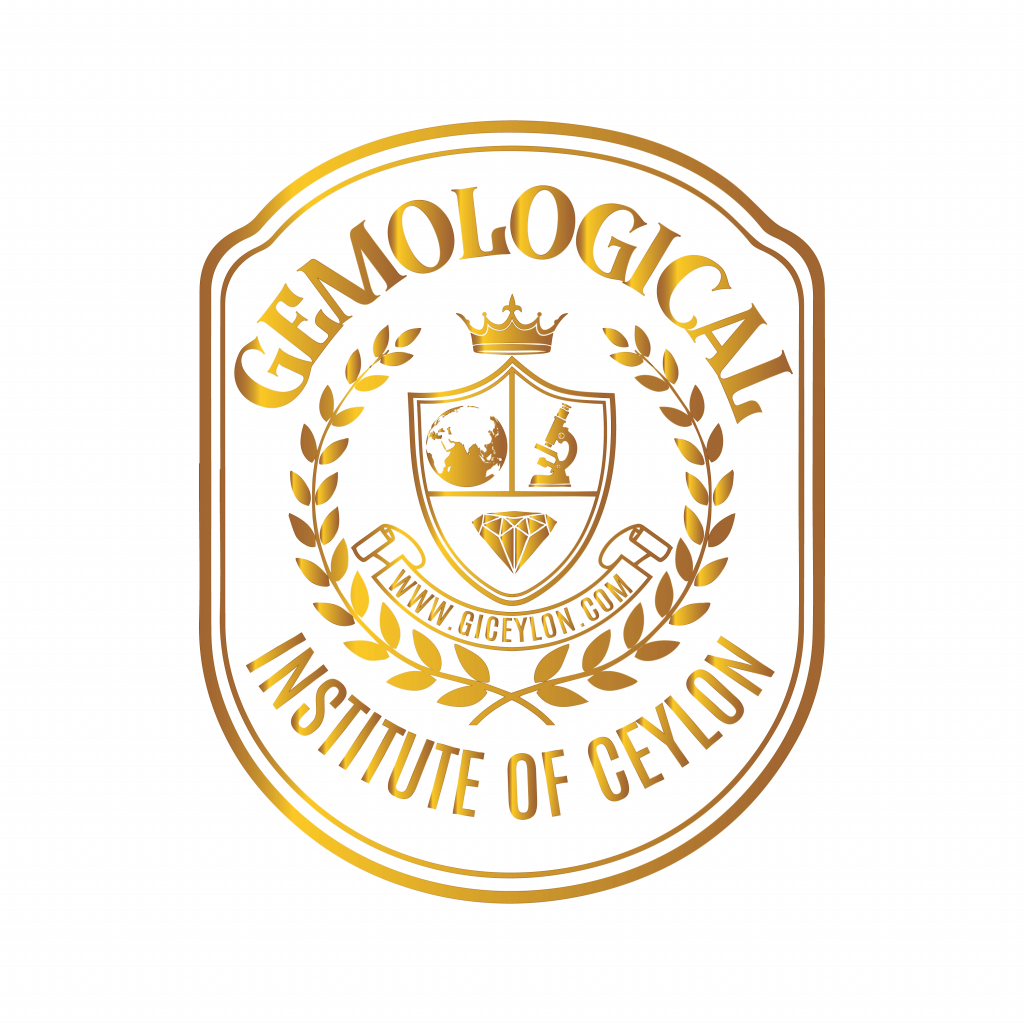
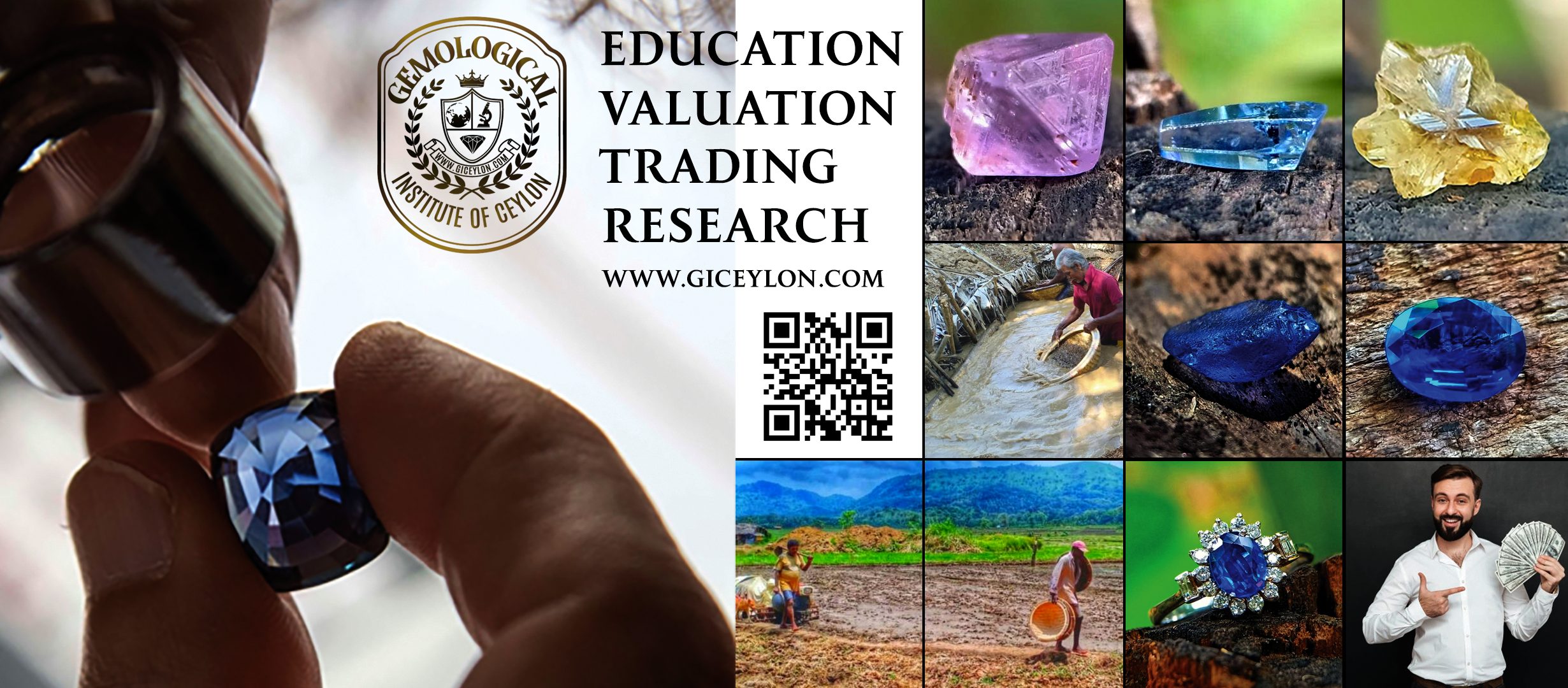
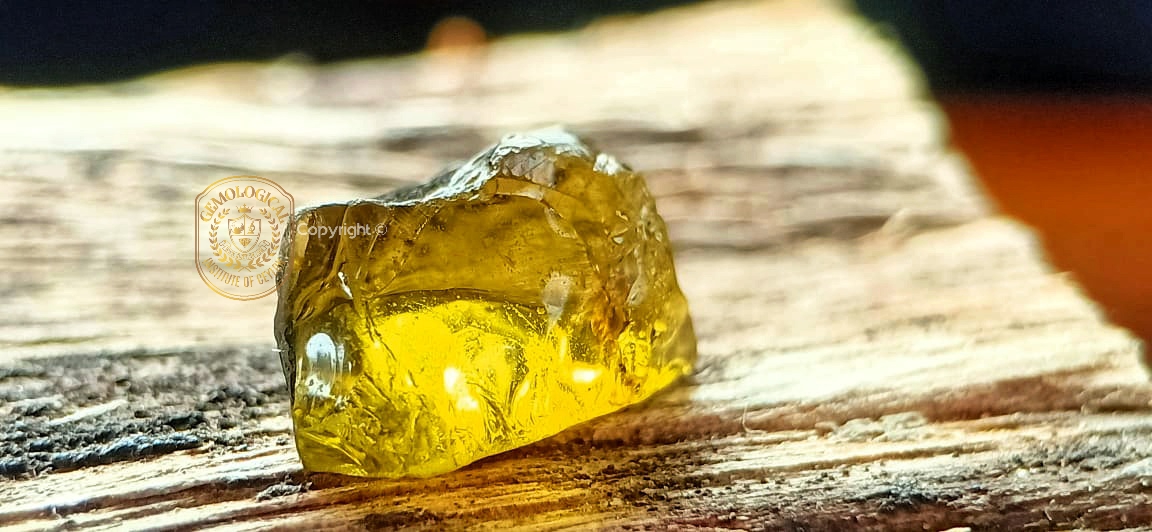
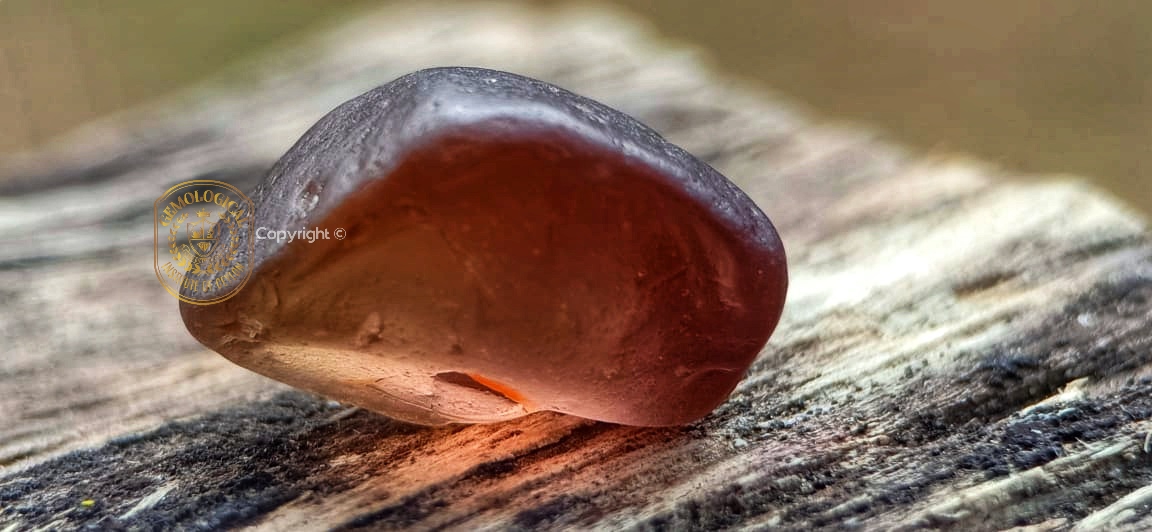
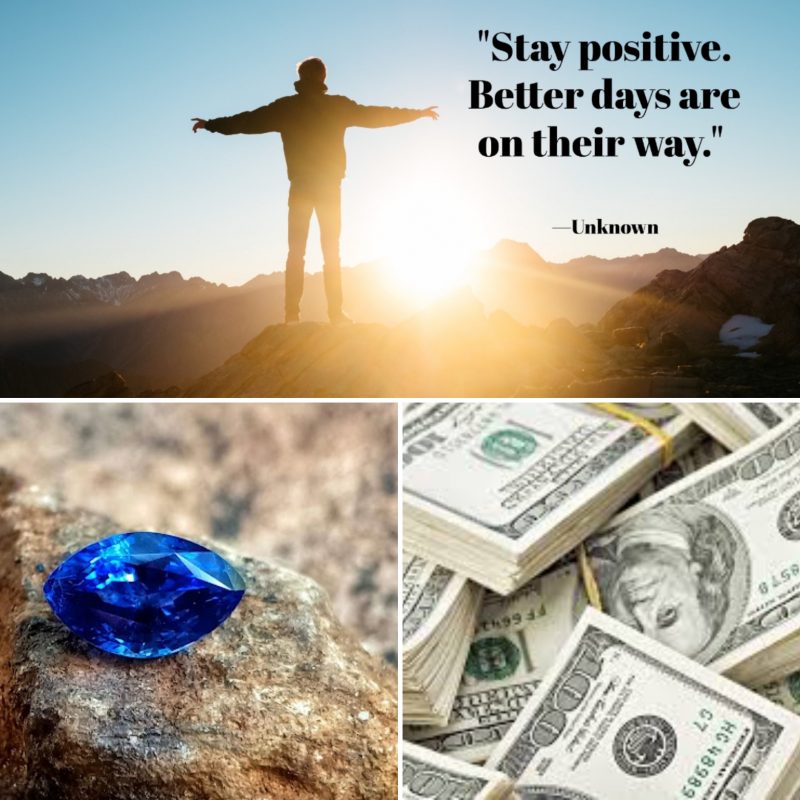
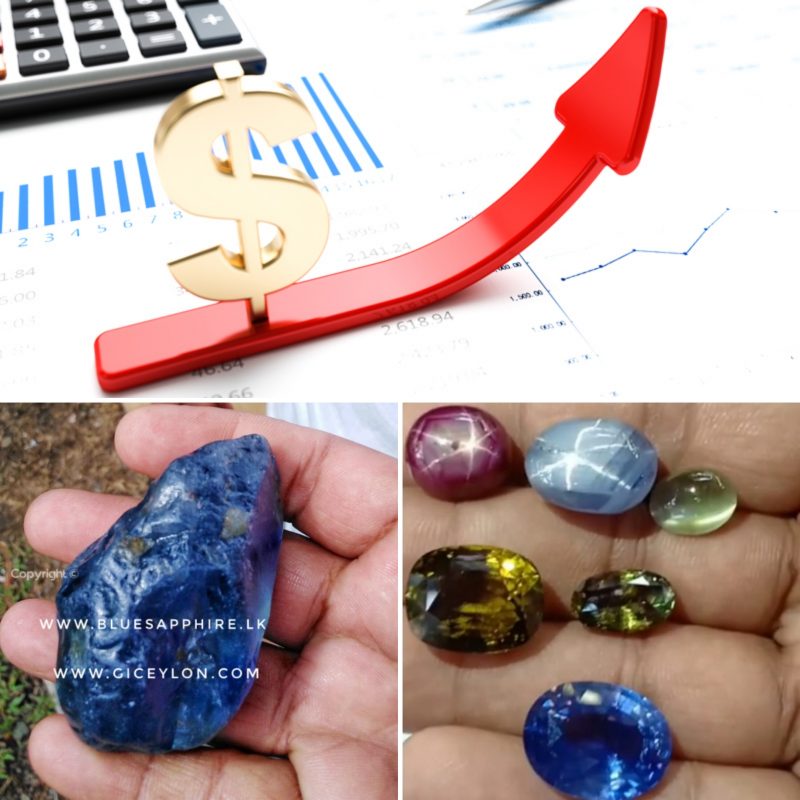
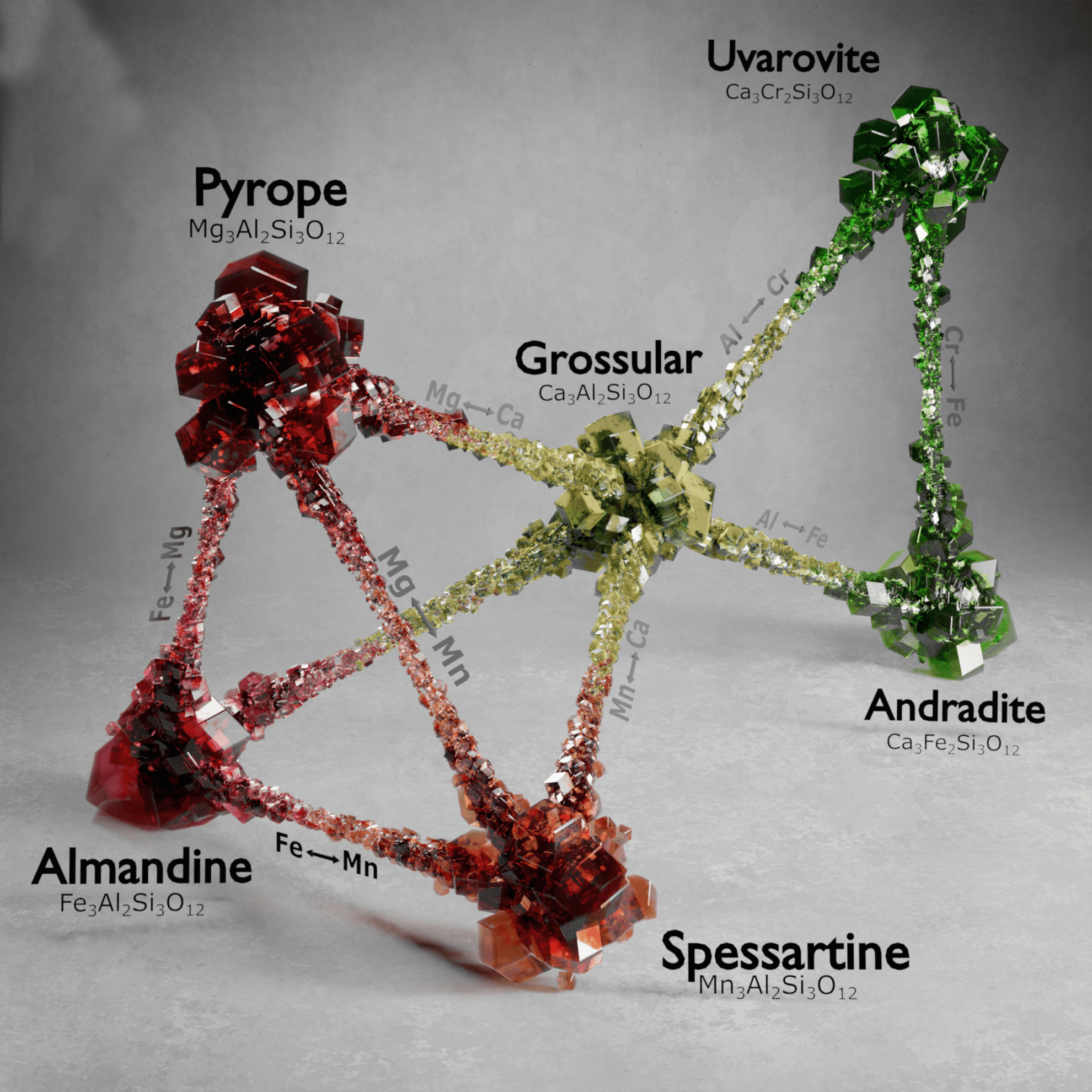 Garnet is often thought of as red, but these gemstones come in almost any color and are popular for jewelry of all kinds. If you want to buy this January birthstone, that’s great news. In the gem world, the garnet family is one of the most interesting. It’s not a single species, but rather a group of different species and varieties that make it up.
Garnet is often thought of as red, but these gemstones come in almost any color and are popular for jewelry of all kinds. If you want to buy this January birthstone, that’s great news. In the gem world, the garnet family is one of the most interesting. It’s not a single species, but rather a group of different species and varieties that make it up.